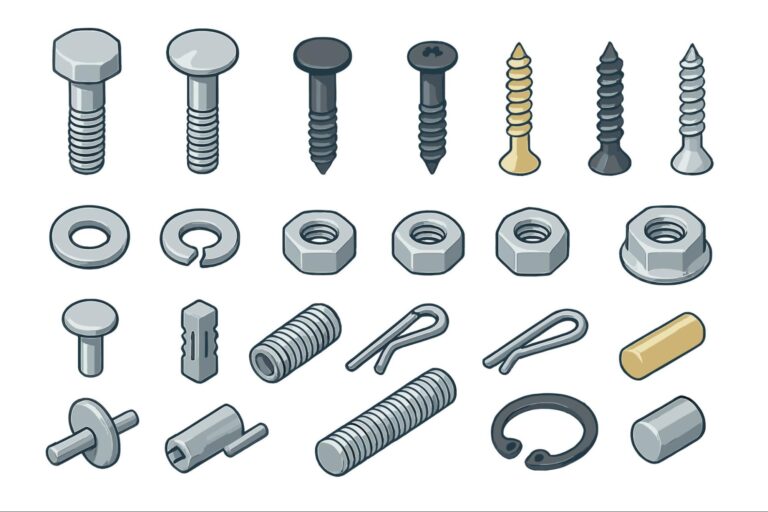Time to read: 5 min
In many manufacturing facilities, design engineers have a diva reputation — they’re known for imparting impossible-to-manufacture requirements, strict quality control requirements, and an unwillingness to compromise. While those stereotypes are earned, the truth is that most design engineers are passionate about the products they design and want to ensure the highest quality for their customers and end users.
As a mechanical engineer, a design engineering role at an aerospace company was one of my favorite jobs I have ever had. Design engineering is a broad field with a range of opportunities, and as long as new products are being developed and brought to market, design engineering will be needed.
So, is design engineering a good career path for you? Read on to learn more about the education requirements and myriad career paths available for design engineers.
What Do I Need to Study to be a Design Engineer?
Design engineers come from many educational backgrounds. Although it’s not as common in 2022, plenty of engineers started out on the production floor making parts. I’ve worked with many non-traditionally trained engineers who didn’t receive a college degree, but were highly skilled and taught me a lot.
As far as formal education is concerned, here are some of the paths to a design engineering career:
- Bachelor of Science in mechanical engineering (BSME): the tried and tested path to becoming a design engineer is to get a BSME degree. While this ranks as one of the most difficult four-year degrees, it pays off, with an average salary of $90,839 in 2022.
- Bachelor of Science in mechanical engineering Technology (MET): a variation of the BSME with more focus on hands-on learning and manufacturing than on design.
- Bachelor of Science in design engineering/Manufacturing design engineering: while not as commonly offered as BSME or MET programs, design engineering degrees offer an interesting mix of product design and manufacturing operations skills.
- Miscellaneous Engineering Degrees: Civil Engineering, Manufacturing Engineering, Aerospace Engineering, Biomedical Engineering, Chemical Engineering, etc.
- Miscellaneous Science Degrees: Optics, Chemistry, Physics, Metallurgy, Materials Science, etc.
Product Design Engineer
Almost everything you touch on a daily basis was designed by a product design engineer, from the electronic device letting you read this article, to the chairs you sit on. The world would be less organized and less productive without good product design engineers.
Simply put, product design engineers make products that consumers need or want to use. This commonly consists of the following responsibilities:
- Determining product requirements when provided with a new product concept
- Pulling data on the likelihood of product success (research and market studies)
- Developing product designs, including materials, drawings, and solid models
- Conducting design reviews
- Determining the best method(s) for manufacturing the product
- Calculating manufacturing, materials, and overhead costs to determine product pricing
- Sourcing suppliers to manufacture the product
- Sourcing raw material suppliers
- Explore potential new product opportunities
- Study competitors’ products (reverse engineer)
- Assist with manufacturing issues and quality issues as they arise
It’s a lot of work, but it’s worth it — product design engineers earn an average total salary of $110,198 per year.

CAD Design Engineer
While a product design engineer is a jack-of-all-trades, a CAD design engineer has a more narrowed focus on physical product renderings and physical product drawings. A CAD design engineer does drafting for anything from a cell phone case to an entire building HVAC system. CAD design engineers must be able to see 2D and 3D interchangeably.
Working as a CAD design engineer is also a cross-functional role that tends to work with a multitude of other roles, which includes:
- Working with design engineers to interpret, modify and perfect a design from exacting specifications
- Utilizing computer software to generate designs for everything from simple products to complex assemblies
- Using complex geometry rules to determine correct methods for modeling complex shapes and determining relationships amongst shapes
- Creating 2D images through surface modeling
- Creating 3D renderings through solid modeling
- Applying engineering controls via notes on the drawing
- Creating Bills of Materials (BOMs) for manufacturing and procurement
- Following products through costing and Design for Manufacturability (DFM) feedback and implement changes as needed
- Applying knowledge of manufacturing techniques to determine the feasibility of manufacturing certain shapes or features
- Performing complex analysis of modeled parts or features, like Finite Element Analysis (FEA)
CAD design engineers earn an average total salary of $91,924 per year.
Automation Design Engineer
One of the most exciting and groundbreaking design engineer careers to look to in 2023 and beyond is the automation design engineer role. This type of design engineering is increasingly important in a world that relies heavily on technology and automation to facilitate everything from pizza delivery and air travel to manufacturing and vacuuming our homes.
Automation design engineers, in a broad sense, utilize technological processes to design methods for automating processes. Automation design engineers strive to minimize human input in processes that would otherwise require manpower or labor to facilitate.
Here’s what an automation engineer’s job entails:
- Utilizing mechanical systems to implement automation
- Designing structural robotics components
- Identifying areas where automation provides value to a process or operation
- Designing, programming, testing and simulating automation systems, including machinery and overall processes
- Creating design specifications for automation equipment and systems
- Continually improving production systems or processes with the use of automation
Automation design engineers earn an average of $101,436 per year.

Quick Design Engineer Career FAQ
What is the demand and job outlook for design engineers?
Automation design engineers are projected to be in high demand in 2023. The % growth rate for mechanical engineers over the next 7-8 years is projected to be steady at 7%.
What is the salary range for a design engineer?
The average annual design engineer salary in the United States is $75,433 to $96,822.
What are other design engineering career paths?
- Mechanical design engineer
- Senior mechanical design engineer
- Project engineer
- Manufacturing engineer
- Process engineer
Is design engineering a good job?
Yes, design engineering is a solid, reliable career choice in 2023 and beyond, in no small part because there are so many things you can do as a design engineer. If you love math, physics, chemistry, materials science, and technology, design engineering may be a good fit for you.
Sourcing Simplified – Start Your Next Project With Fictiv
Once you’ve made the decision to move to design engineering as a career, you’re going to need to have parts manufactured eventually. For all your 3D printed and CNC machined part manufacturing and finishing needs, Fictiv has you covered. We’re experts at producing custom mechanical parts in a variety of materials, and we simplify custom part sourcing with streamlined, automated workflows.
Fictiv is your operating system for custom manufacturing that makes part procurement faster, easier, and more efficient.
Create an account and upload your designs to see what our instant quote process, design for manufacturability feedback, and intelligent platform can do for you. Our 3D printing service can create your parts in as little as 24 hours, and our CNC machining service manufactures parts in as fast as 2 days!










